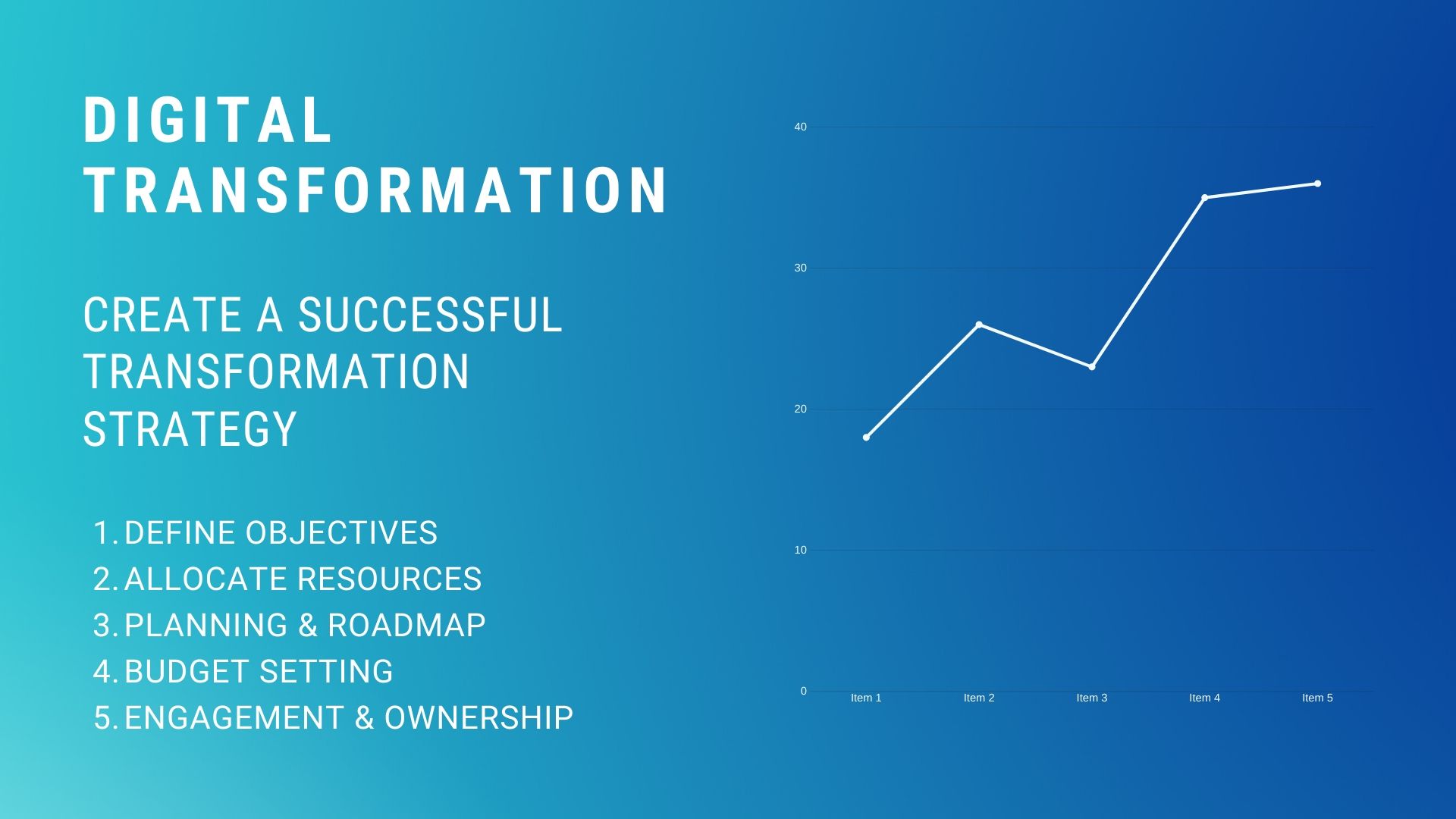
Digital Transformation: How to Create a Successful Strategy that Works
The new digital economy is getting more competitive than ever. In order to thrive and keep up with the market, companies have to innovate themselves and become adaptable to new changes, especially when it comes to new technologies advancement.
In the past few years, many companies have been taking a big leap in transformation and now starting to realize the immense benefits of their new digital business models as well as processes.
Leveraging the advantages provided by technologies could allow companies to optimize business processes, increase revenues, and at the same time boost employees’ productivity. In order to achieve this, companies will need to have the right digital transformation strategy.
With digital transformation taking place across end-to-end business operation processes and workflows, it’s important that companies take into consideration all the various factors ensuring the success of digital transformation.
In this article, we examine the critical factors for creating a successful digital transformation strategy, as follow:
1. Establish goals and focus on the impact
"According to the Technology Vision 2019 survey by Accenture, asking 6,672 business and IT executives, 45 percent reported that the pace of innovation in their organizations has significantly accelerated over the past three years due to emerging technologies."
The hype surrounding the latest, and emerging technologies could sometimes be the reason leading business organizations to kick-start digital transformation, as a way to keep up with industry-specific trends, but without having any clear objectives and criteria for evaluation of success.
Such surprise changes could turn into turmoil, and as a result, the entire enterprise system becomes disintegrated due to no certain end-goals.
During digital transformation, it’s critical that business remains on-going and provide customer with business value as usual without any disruption. A dis-organized digital transformation may leave enterprises vulnerable to the risks of business loss, and losing profitable markets and customers to competitors.
Leveraging the available tools and framework for digital transformation can provide valuable insights into the area of business where digital transformation benefits the most.
Ultimately, changes should only be introduced into enterprise after fully taking into consideration the entire organizational perspective, departmental relationships, and the processes interdependency within the enterprise.
2. Budget setting and IT infrastructure investment
At the enterprise level, digital transformation will require intensive capital outlay including IT infrastructure investment.
One common issue in promising digital transformation projects is the delay during mid-project due to insufficient funding and/or inadequate IT infrastructure that is not appropriate for the increase of demand.
Setting a realistic budget before embarking on digital transformation is necessary to ensure that the scope of the project does not evolve beyond the capacities, where the enterprise can no longer fund it or even leading to loss of investment.
Here, an enterprise can undertake a discovery phase to have a clear outlook in terms of kick-off points.
Besides, IT decision-makers should try to have in place a satisfactory IT infrastructure assets to satisfy the demanding technical resources required of digital transformation.
Hiring external IT consulting services to help set-up and equip your enterprise for such needs is a great way to achieve an objective enterprise-architecture that is highly-functional for transformation.
3. Engage stakeholders, assign ownership

Digital transformation leaves a broad and long-lasting effect on the enterprise structure as a whole.
Its successes, however, hinge on the much-needed buy-in from stakeholders and also key decision-makers who take ownership and steering the long-term strategy of digital transformation.
Without the involvement of executives and management, the project can stay in limbo without having required approval for moving forward.
Essentially, a successful digital transformation strategy as well as implementation requires buy-ins and ownership from stakeholders.
Executives, in addition, should also try to bring other stakeholders on-board and involve the executive management team to ensure a transformation can be smoothly implemented – especially in large organizations where digital transformation will require advocates across business departments, at every level of seniority.
4. Timelines and Roadmap
Just like any endeavors in IT development, issues and roadblocks will inevitably occur throughout the process.
Without thorough planning, problems such as project scope creep is likely to happen during transformation – should requirements are not thoroughly determined ahead.
As a result, re-work which is costly becomes highly possible, leading to missed deadlines and extended timelines.
To proactively avoid such issues, the following actions could be taken:
- Planning in advance to include: project timelines and milestones, defining fully all of the actions taken throughout the transformation.
- Ensuring all employees and stakeholders understand the motivations and long-term benefits of digital transformation;
Without proper planning, changes when introduced too abruptly can lead to disorder and mismanagement within the organizations.
5. Resources allocation and expertise
Digital transformation entails sufficient resources, including necessary expertise and personnel whose skills match the particular requirements of the project. Thus, allocating adequate resources is required to make digital transformation happened.
In terms of internal resources such as executives who are going to be authorized decision-makers, they should possess the required knowledge for decision making.
For technology implementation, including integration – external services and resources can be employed through an IT and/or software development outsourcing partner. However, internal staff are still expected to get involved and manage the project.
To effectively work with your technology implementation partner, it should be required of them to have an overview of your enterprise architecture by working closely together with the internal team.
This enables a detailed examination that outlines pain points and how digital transformation can address them effectively.
An experienced implementation partner can offer an objective consulting and analysis, which helps to clear the picture of how an enterprise technology foundation functions, enabling the process of digital transformation to become clearer and easier for planning and formulate.
Conclusion
Whether it’s manufacturing, finances, insurance, etc. business organizations across industries have been adopting digital transformation in order to take advantage of technology to transform themselves and gain competitive advantages to thrive.
Yet, digital transformation is indeed a long process that requires careful considerations of various internal and external factors. It is not feasible for established companies to completely transform themselves in an instant. Adopting digital transformation in a controlled and gradual way is necessary for ensuring success and adoption.
With a track record of success in advising and managing IT projects across industries, we can help your enterprise leverage and derive maximum benefits from the new technologies. Let’s connect and discuss digital transformation today.



